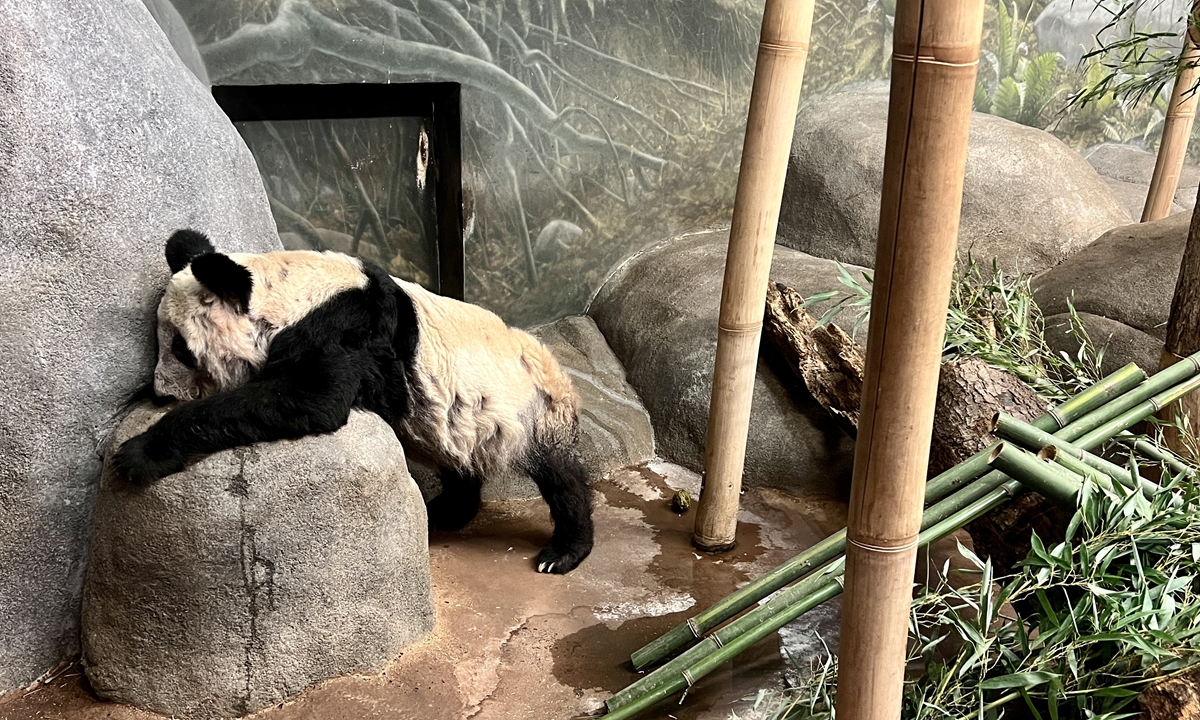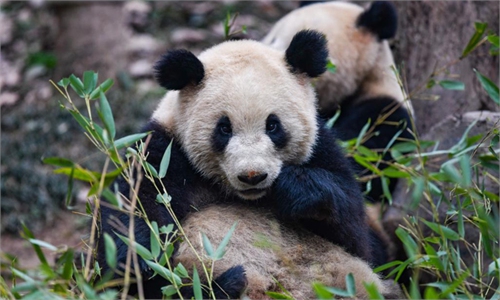
Giant panda Ya Ya is at the the Memphis Zoo in the US on February 14. Photo: IC
The recent news of giant pandas in the US has saddened many Chinese panda fans. Le Le, the 25-year-old male giant panda living in the Memphis Zoo in Tennessee, the US, for 20 years, suddenly died on February 1. Meanwhile, Ya Ya, a 23-year-old female giant panda that came to the US together with Le Le, has recently suffered from deteriorating health.After an autopsy by a team of Chinese and US panda experts, preliminary results suggest that heart disease was the cause of the death of Le Le. China and the US are now proactively coordinating the return of Ya Ya to China as soon as possible.
The two pandas remind people of the 2008 animated blockbuster Kung Fu Panda. That was the year pandas became popular worldwide, and eight pandas came from Southwest China's Sichuan Province to Beijing to add cheer to the Summer Olympics.
Giant pandas are known as the "ambassadors" of China-US friendship and cooperation. In April 1972, only two months after former US president Richard Nixon visited China, two pandas were sent to the Smithsonian's National Zoo in Washington. For more than 50 years, giant pandas have earned the fondness of Americans, becoming an important link between the peoples of China and the US.
Kung Fu Panda represents Hollywood's imagination of China. In the movie, the clumsy, friendly, and amiable panda is portrayed as an invincible world hero. The image of giant pandas reached its peak in the US when Po, the main character in Kung Fu Panda, finally defeated the evil villain Tai Lung, saved the Valley of Peace, and became the true Dragon Warrior. The implication here is certainly more than just an upgrade of the giant panda's image.
In reality, this is against the backdrop that China hosted the Beijing Summer Olympics in 2008 and became the world's second-largest economy in 2010, and the China-US relationship had maintained steady growth.
What viewers see from Kung Fu Panda is the transformation of the giant panda from a cute and friendly rare animal to a powerful hero. When US artists cleverly combine Chinese kung fu with pandas, it may suggest that the image of pandas in the eyes of some US politicians starts to change. In the viewfinder of some US politicians, the giant pandas seem to become increasingly vague, while the "Red China" behind them becomes clearer and clearer.
In early 2022, there was a political controversy regarding pandas in the US Congress. Some members of Congress positioned pandas as a propaganda "window dressing" for China's diplomacy with the US, accusing China of using pandas to "soften its authoritarian image." They even linked pandas with so-called human rights and Xinjiang issues, as well as the Taiwan question, and proposed a bill as posturing.
Have pandas really changed? Absolutely not. What has changed, however, is the mentality of the US political elites when observing China. This is one of the reasons why so many Chinese are worried about the status of pandas in the US.
An interesting comparison would be that giant panda is still one of the most beloved animals in many countries around the world, including in the US. People won't lose the focus of their cameras just because the panda comes from China, and what they love most about the giant panda is its cute, friendly, and lovable image.
For example, the health status of Ya Ya has recently touched the hearts of many panda fans in the US, who have expressed their concerns online.
The giant panda is not only China's national treasure, but also a rare world-class animal. It is the responsibility of the Chinese people to protect the giant panda. Over the decades, the Chinese have not changed their intentions.
In 2016, the giant panda was downgraded from "endangered" to "vulnerable" on the global list of species at risk of extinction by the International Union for Conservation of Nature, and China made the same decision in 2021. The current population of giant pandas living in the wild has exceeded 1,800. This is a significant contribution by the world's most populous country to the planet and its ecological environment. It also reflects a major developing country's pursuit of quality development.
China has also been able to achieve such great results thanks to its cooperation with other countries, including the one with US experts over giant panda's reproductive techniques. It is believed more people around the world will be able to witness giant pandas in the future, and people will continue to become fans of this animal. With the drumbeat of China's peaceful development, giant pandas will remain active on the global stage as cordial messengers.

